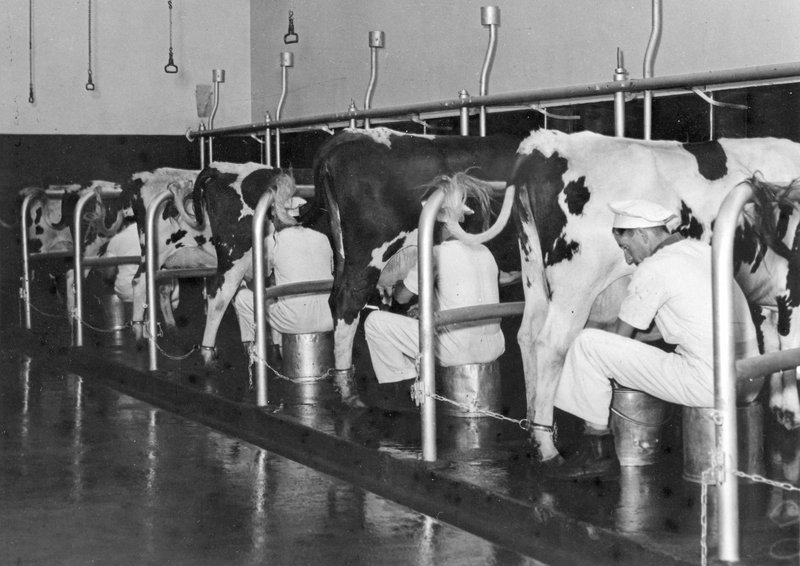
Model dairies
In 1926 Camden Park opened Model Dairy Number 1, located at Menangle near the Central Creamery. It was the first of five model dairies built by Camden Park over the next decade. Model dairies represented the first major upgrade of Camden Park's dairy facilities since its move to share-farming in the 1890s.
Model dairies were, as the name suggests, models or shining examples of best practice, modern production and hygienic conditions. In the 1920s most milk in New South Wales still came from old wooden dairies where the cows stood in the dust or mud while they were milked.
In stark contrast, cows in Camden Park's model dairies first walked through a foot bath and were then washed in covered, concrete stalls before entering the dairy itself. The brick dairy had a concrete floor with bails, fittings and equipment designed for ease of cleaning and optimum hygiene. The workers who milked the cows wore white uniforms and their milk buckets were fitted with special strainers on the top.
In the early years of the model dairies the milk was immediately strained, cooled and pasteurised at the dairy. In later years the milked was pasteurised at the Menangle or Sydney factories.
Camden Park's strict emphasis on hygiene was not simply for show. In general, milk sold to the Sydney market in the 1920s varied greatly in quality due to milking in dirty surroundings, the lack of compulsory TB testing of dairy herds and unhygienic storage. This situation provided a market opportunity for the sale of guaranteed high-quality milk at a premium price. Camden Park's model dairies were designed to give the estate a marketing edge in the cutthroat Sydney milk market.
Camden Park achieved this marketing edge from 1926 with a three-pronged strategy of model dairies, packaging milk in sterilised bottles, and marketing it as Camden Vale Special Milk that was safe for infants and invalids.


